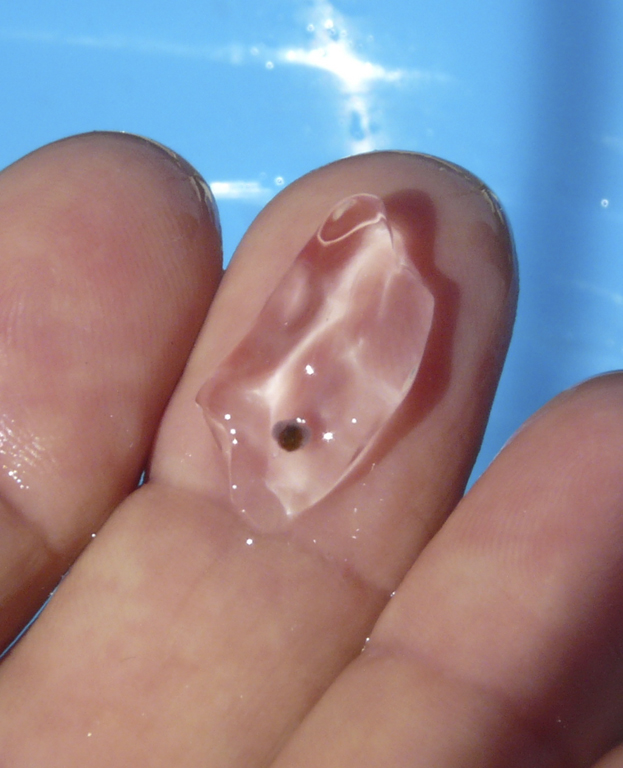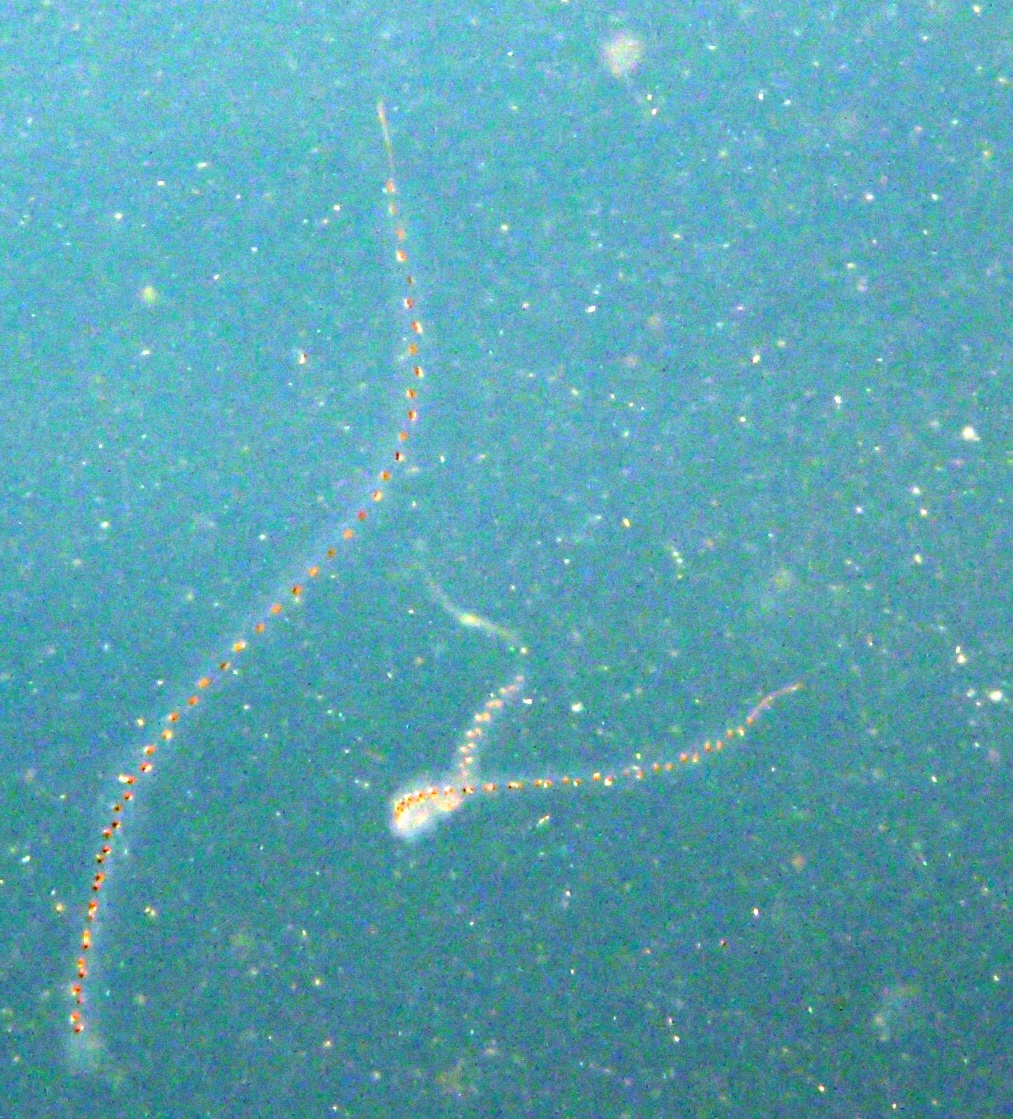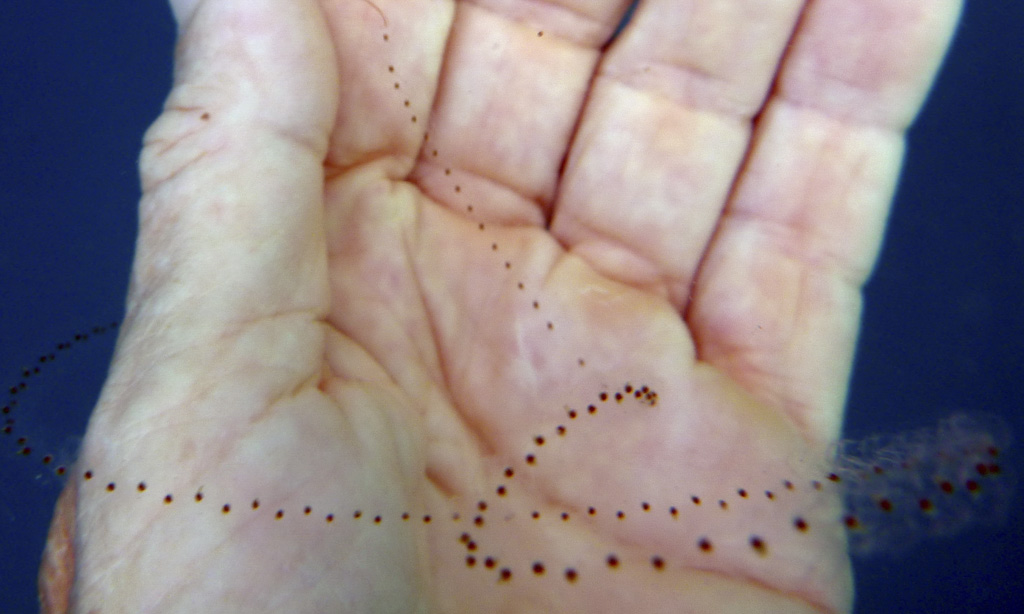Published in the Ocean Watch column, Honolulu Star-Advertiser © Susan Scott
July 9, 2012

Individual salp.
After a day of sailing near Puerto Vallarta, Mexico, I jumped off the boat in an anchorage called Yelapa Cove. The water gave me instant relief from the summer heat, but it also gave me pause. Dozens of … somethings were lightly bumping, but not stinging, my arms and legs.
Quickly I cleared my mask and peered into the olive green water. There necklaces, bracelets, earrings and brooches spiraled up, down, forward and backward. I had jumped into a jewelry store of salps.
Salps are hard to explain because they aren’t like anything else and don’t translate well. These marine creatures live in a hard-to-describe world similar to that of those transparent slinky-type things snorkelers sometimes see in Hanauma Bay. But my repeated difficulty in getting a handle (and a hand) on salps is one of the reasons I like them. They’re weird and wonderful.
Salps are tunicates that appear as individuals or in chains, but the chains are easier to see. Each amber bead in a chain is an individual salp body wrapped in a harmless cocoon of jelly. The connections between the cocoons are loose. When I tried holding a chain for a photo, the bodies disconnected from one another almost immediately and pulsed away. To get the salp-in-the-hand picture above, I had to shoot fast.

Salps swim in all patterns, some spiraling through the water like planktonic party streamers, others motoring along in straight lines. The animals propel themselves by inhaling water in one end of the body and pushing it out the other. This swimming strategy is a twofer because the muscular movements also suck in food and expel waste.
Salps aren’t traveling far during all this jetting around. They’re eating. During phytoplankton blooms, from the tropics to the poles, these vegetarians gobble up algae by the tons and reproduce rapidly.
A baby salp starts a chain by budding clones of itself. The cloned bodies all start out as females, but as they grow older they turn into males. Older male chains fertilize younger female chains. The offspring of these unions then start their own chains.
Because salps are among the fastest growing of all multicellular animals, they multiply with remarkable speed. In the nutrient-rich water of the Southern Ocean, salps can be more plentiful than krill.

When salps run out of food, they break up and die, sometimes washing up on beaches in slimy mats. Most often, though, they fall to the sea floor, where their bodies contribute significantly to the carbon recycling system of the world’s oceans.
When I jumped in the water and saw salps, I’m glad I knew enough to climb back on the boat and fetch my camera. The next morning my lovely salps were gone.
Having writhing wormy things running into my face and body normally would give me the creeps. Knowing they were salps made getting bumped a joy.
©2012 Susan Scott